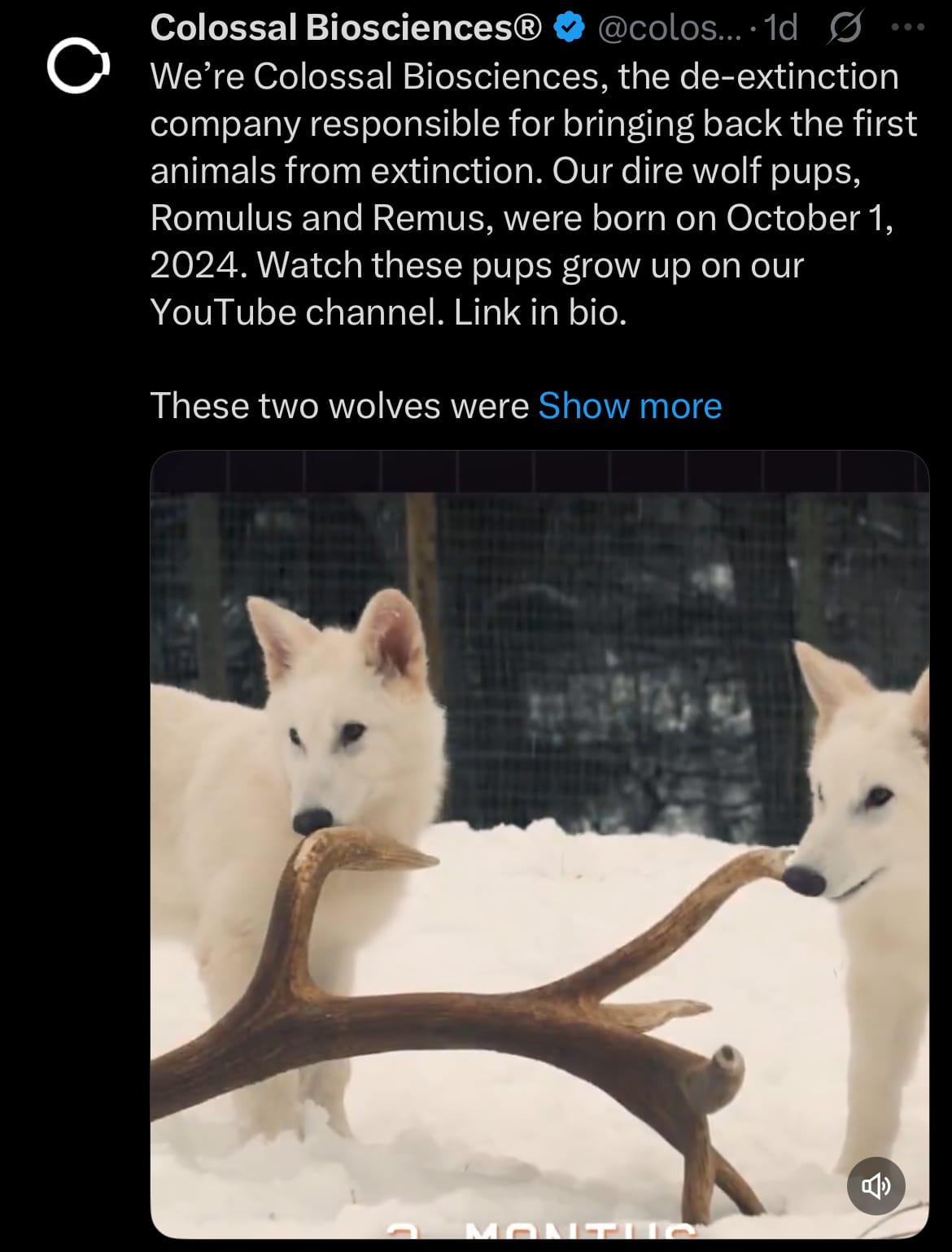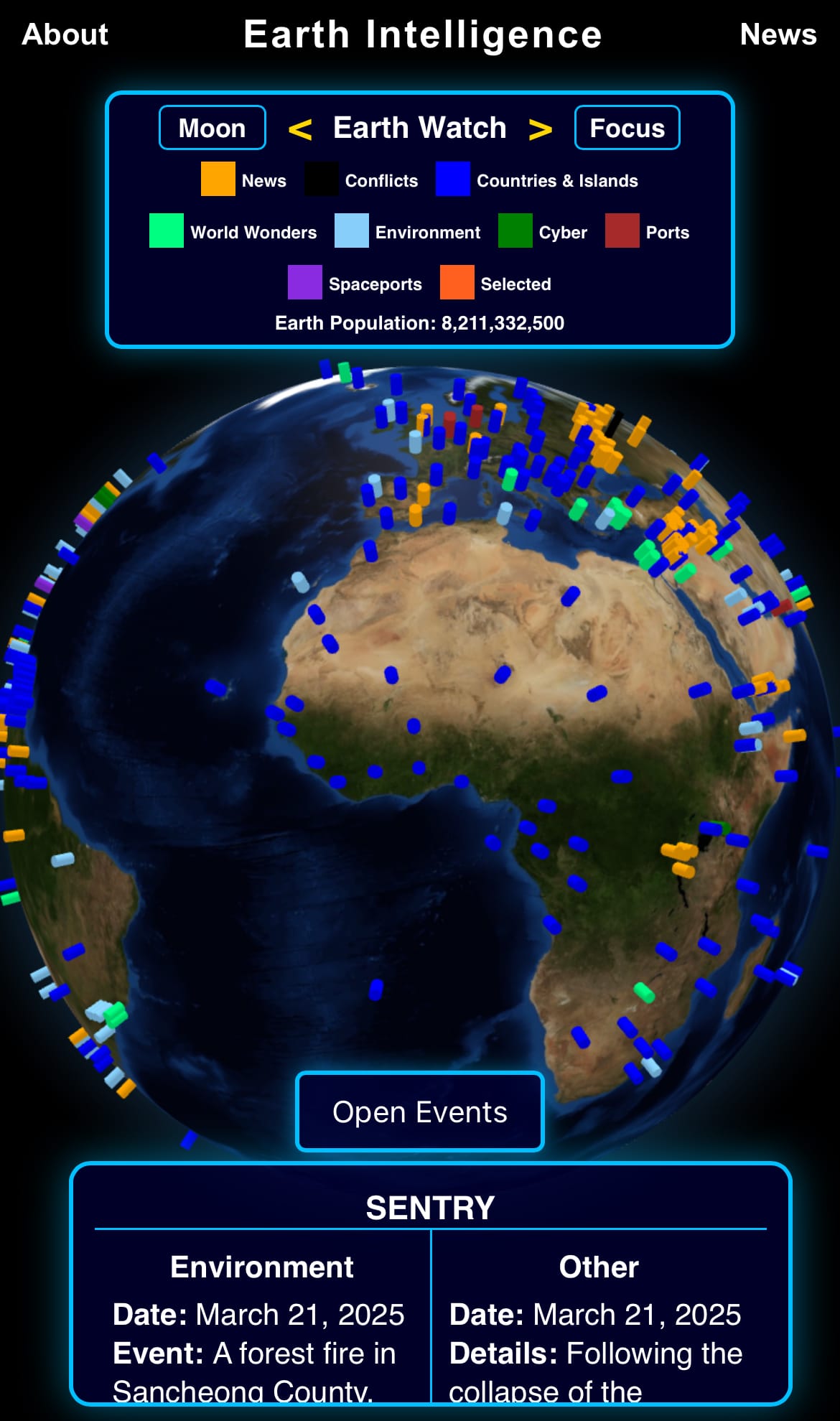Wednesday☕️

Trending:
- Today, April 9, 2025, an executive order from President Donald Trump implementing 104% tariffs on all Chinese imports went into effect. The policy includes a 10% tariff on imports from all countries plus an additional 94% applied solely to China, targeting a wide range of goods. It aims to address long-standing U.S. concerns over trade imbalances, focusing on areas like technology and manufacturing where dependence on Chinese supply chains has been a focus point for the Trump administration.

- This tariff stems from an earlier plan for reciprocal trade measures, starting with a 10% global tariff and a 34% rate on China among 57 countries, announced April 2 and effective today. China countered last week with an additional 34% tariffs on U.S. imports, set to begin April 10, leading Trump to raise the China-specific rate to 104% after a deadline for concessions passed on April 8.
Economics & Markets:
- Yesterday’s U.S. stock market:

- Yesterday’s commodity market:

- Yesterday’s crypto market:

Geopolitics & Military Activity:
- Over the past 36 hours, the Houthi-run Al-Masirah TV network reported that the U.S. conducted multiple airstrikes on Mount Nuqum, a site east of Yemen’s capital, Sana’a, using heavy payload bombs. The strikes targeted an underground complex at this location, which is known to store advanced missiles and drones essential to Houthi military efforts. Although the U.S. military has not yet officially confirmed these strikes as of April 8, 2025, they align with ongoing operations aimed at weakening Houthi infrastructure linked to regional security threats.

- Mount Nuqum, situated above Sana’a, serves as a critical base for the Houthi‘s, housing key weaponry in its fortified underground facilities. The site has been a focal point due to its role in supporting Houthi attacks on Red Sea shipping lanes. Yesterday, the Houthis claimed they launched drones targeting U.S. naval vessels in the area, though no damage has been confirmed.
Environment & Weather:
- Over the past week, Louisville, Kentucky, has experienced flooding after heavy rainfall starting April 2, 2025, dumped 8 to 10 inches across the region. The Ohio River, fed by this rainfall and upstream runoff, has overflowed, flooding streets, closing more than 60 roads, and requiring water rescues throughout the city. Areas like the Riviera neighborhood and Broad Run Park have seen homes threatened, with some residents evacuating as water levels approach those of the 1997 flood.

- As of April 9, 2025, the Ohio River at McAlpine Upper in downtown Louisville has crested at 35.6 feet, with the lower lock reaching 67.9 feet, marking one of the city’s top 10 flooding events. Mayor Craig Greenberg noted that floodwaters are not expected to drop significantly until early next week, straining Louisville’s aging flood protection system and keeping many areas underwater. With no major rain expected soon, attention is shifting to managing current water levels and preparing for a slow recovery as the river gradually recedes.

Science & Technology:
- On April 7, 2025, Colossal Biosciences shared a video on social media featuring three dire wolf pups—Romulus, Remus, and Khaleesi—born on October 1, 2024, and January 30, 2025, following their initial announcement on December 10, 2024. The first announcement, released through press releases and the company’s website, outlined the use of CRISPR to edit gray wolf DNA with 20 modifications across 14 genes, using ancient dire wolf samples from a 13,000-year-old tooth and a 72,000-year-old skull. The social media video showed the pups, now six and two months old, in their 2,000-acre preserve in the northern U.S., offering a visual update without emphasizing the scientific specifics.

- Colossal Biosciences, founded in 2021 by Ben Lamm and George Church and valued at $10.2 billion, undertook this project as part of its broader mission in biotechnology and conservation. The pups, created through gene editing and born via surrogate dogs, align with the company’s de-extinction goals, which also include reviving species like the woolly mammoth, dodo, and Tasmanian tiger. The April social media post followed the December reveal, which detailed the process and prompted expert debate about whether these are true dire wolves or modified gray wolves. Beyond de-extinction, Colossal develops genetic tools for cloning endangered species like the red wolf, and aims to advance biodiversity research and development.
Statistic:
- Largest public automakers by market capitalization:
- 🇺🇸 Tesla: $713.61B
- 🇯🇵 Toyota: $214.38B
- 🇨🇳 BYD: $131.89B
- 🇨🇳 Xiaomi: $123.88B
- 🇮🇹 Ferrari: $76.07B
- 🇩🇪 Mercedes-Benz: $51.30B
- 🇩🇪 Volkswagen: $48.96B
- 🇩🇪 BMW: $44.79B
- 🇩🇪 Porsche: $42.89B
- 🇺🇸 General Motors: $42.26B
- 🇮🇳 Maruti Suzuki India: $41.78B
- 🇯🇵 Honda: $39.31B
- 🇮🇳 Mahindra & Mahindra: $35.10B
- 🇺🇸 Ford: $34.55B
- 🇰🇷 Hyundai: $30.49B
- 🇨🇳 Seres Group: $27.27B
- 🇳🇱 Stellantis: $25.71B
- 🇮🇳 Tata Motors: $25.14B
- 🇨🇳 SAIC Motor: $22.76B
- 🇨🇳 Great Wall Motors: $22.38B
- 🇨🇳 Li Auto: $22.36B
- 🇰🇷 Kia: $22.28B
- 🇯🇵 Suzuki Motor: $20.28B
- 🇨🇳 Geely: $17.93B
- 🇨🇳 XPeng: $16.48B
History:
- The history of gene editing started with key discoveries in the 1950s, when James Watson and Francis Crick described DNA’s double-helix structure in 1953, showing how genetic information is held and copied. Early ideas grew from natural mutations and selective breeding, like Gregor Mendel’s 1860s work with pea plants, but active manipulation began in the 1970s with recombinant DNA. Scientists such as Paul Berg, who mixed DNA from different species in 1972, and Herbert Boyer and Stanley Cohen, who cloned genes in bacteria in 1973, set the stage for controlled genetic changes. This led to the first genetically modified animal—a mouse—by Rudolf Jaenisch in 1974, moving research from simple organisms like bacteria and plants to animals on a larger scale.
- By the late 20th century, gene editing advanced with precise tools: zinc-finger nucleases (ZFNs) in the 1990s, TALENs in 2010, and CRISPR-Cas9, developed by Jennifer Doudna and Emmanuelle Charpentier in 2012 from bacterial defenses. CRISPR’s ease and accuracy transformed the field, allowing edits in animals—like pigs resistant to disease in 2015—and research in humans, such as China’s 2015 CRISPR-edited embryos for study. As of April 9, 2025, gene editing is used in livestock improvement and human treatments, like the 2023-approved CRISPR therapy for sickle cell anemia in the U.S., though ethical questions linger about editing human embryos versus treating existing conditions. Looking ahead, labs are testing future applications like reviving extinct species, engineering climate-resistant crops, and curing complex genetic disorders, aiming to expand the technology’s reach across biology.
Image of day:

Thanks for reading!
Earth is complicated, we make it simple.
Click image to view the Earth Intelligence System:



Support/Suggestions Email:
earthintelligence@earthintel.news




